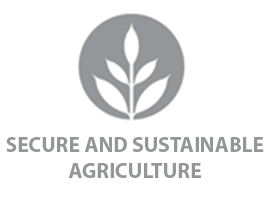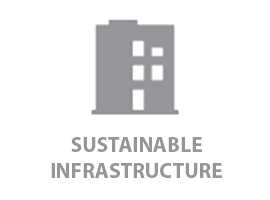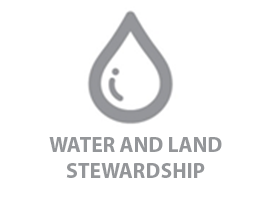SMARTFARM Project
Research Menu
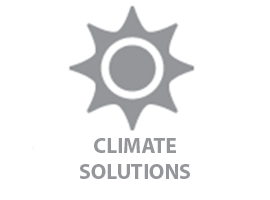 Current
Current
Funded
iSEE Work
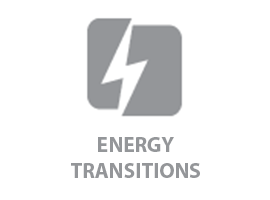 Current
Current
Funded
iSEE Work
Current
Funded
iSEE Work
Current
Funded
iSEE Work
Current
Funded
iSEE Work
 Project Overview
Project Overview
The SMARTFARM Project fits into the iSEE research themes of Secure & Sustainable Agriculture, Climate Solutions, and Energy Transitions.
This project is part of the Agroecosystem Sustainability Center (ASC).
In Lead Investigator Kaiyu Guan’s words:
 “Our DOE-funded project team will develop a precise system for measuring greenhouse gas emissions from commercial bioenergy crops — essentially new technology for managing bioenergy crops, improving yield, reducing over fertilization, and designing new tools for ‘Smart Farms.’
“Our DOE-funded project team will develop a precise system for measuring greenhouse gas emissions from commercial bioenergy crops — essentially new technology for managing bioenergy crops, improving yield, reducing over fertilization, and designing new tools for ‘Smart Farms.’
“We will establish the Midwest Bioenergy Crop Landscape Laboratory (MBC Lab) to monitor emissions on fields in Champaign County, and the vast amount of data collected will be publicly available and could someday lead to financial rewards for farmers who reduce emissions through sustainable crop management.
 “Our team will develop protocols for data processing and storage, create an online portal for growers and other researchers to access, and build the cyberinfrastructure for real-time data visualization. The researchers will also share findings regularly with the broader farmer communities in Illinois.
“Our team will develop protocols for data processing and storage, create an online portal for growers and other researchers to access, and build the cyberinfrastructure for real-time data visualization. The researchers will also share findings regularly with the broader farmer communities in Illinois.
“Our MBC Lab is the perfect testbed for measuring emissions from biofuel production, and the platform we will develop will provide data and technology that can be applied to existing markets and broader production agriculture for ‘smart farming’ and environmental sustainability.”
Project News
- Illinois Researchers Prove New Method to Measure Ozone Stress in Soybeans
- Researchers Propose Supercomputing Solution to Measure Field GHG Emissions
- Director Earns Prestigious AGU Macelwane Medal
- SMARTFARM/ASC Co-Authored Paper: New Meth0d for Soil Organic Carbon Estimates
- Summer 2023 Updates
- New ASC study: Trade-Offs between SOC Benefits and Crop Yields
- New ASC grant from USDA NIFA
- SMARTFARM/ASC Co-Authored Paper: Forecasting Nitrogen Loads
- SMARTFARM/ASC Co-Authored Paper: Tech boost for Tillage Estimates
- SMARTFARM/ASC Co-Authored Paper: New Insights for Cropland Carbon Budgeting
- SMARTFARM Co-Authored Paper: Adoption of Cover Crops Ramps up in Midwest
- Another Award for SMARTFARM Lead Investigator
- SMARTFARM Co-Authored Paper: Cover Crop Practices Need Review
- SMARTFARM Paper: N2O Emissions Spike during and after Freezes in the Corn Belt
- SMARTFARM Lead, ASC Founding Director Charts Course from Blue Waters to Delta
- Summer 2022 Updates
- SMARTFARM Paper: Using AI to Predict Agricultural N2O Emissions
- SMARTFARM Paper: New estimation strategy improves soil carbon sampling
- SMARTFARM Paper: Hyperspectral sensing, AI open new path to soil carbon monitoring
- SMARTFARM Finding: Plane Sensors Detect Crop Nitrogen with High Accuracy
- Summer 2021 Updates
- Project Hiring Postdoctoral Researcher!
- Project Extended with Second DOE Grant
- iSEE Helps Secure $3.3M DOE Grant

Crops at the The SoyFACE (Soybean Free Air Concentration Enrichment) facility.
As the world focuses on not only solving the climate crisis but also sustaining the world’s food supply, researchers need tools to evaluate how atmospheric pollutants affect crops. Over the past decade, the agriculture community has turned to solar-induced chlorophyll fluorescence (SIF) measurements to detect stresses on plants.
Plants absorb light from the sun to power photosynthesis, and the unused energy is emitted as heat and a tiny glow invisible to human eyes, termed fluorescence. Ever since the first global SIF map was generated in 2011, SIF has been used by researchers to investigate photosynthesis dynamics. For instance, it has been used to determine how high levels of carbon dioxide (CO2) or elevated temperature affect a plant’s properties.
Now a team from the University of Illinois Urbana-Champaign and the USDA Agricultural Research Service (ARS) has used SIF to measure the effects of elevated ozone (O3) on soybean plants. The team published its findings in the Journal of Experimental Botany.
“Researchers have found SIF to be a faster, safer, and noninvasive way to study photosynthesis,” noted Genghong Wu, the work’s first author and the former Ph.D. student in the Department of Natural Resources and Environmental Sciences, under the supervision of Associate Professor Kaiyu Guan, the senior author of the work. “That is why it has become so popular. The novelty of this study is that for the first time, SIF was used to measure elevated ozone stress on soybeans in the field.”
Full article by Agroecosystem Sustainability Center Communications Lead Mike Koon >>>
Increased government investment in climate change mitigation is prompting agricultural sectors to find reliable methods for measuring their contribution to climate change. With that in mind, a team led by scientists at the University of Illinois Urbana-Champaign proposed a supercomputing solution to help measure individual farm field-level greenhouse gas emissions.
Although locally tested in the Midwest, the new approach can be scaled up to national and global levels and help the industry grasp the best practices for reducing emissions. A new study led by Agroecosystem Sustainability Center (ASC) Founder and Director Kaiyu Guan, Associate Professor of Natural Resources & Environmental Sciences, synthesized more than 25 of the group’s previous studies to quantify greenhouse gas emissions produced by U.S. farmland. The findings — completed in collaboration with partners from the University of Minnesota, Lawrence Berkeley National Laboratory and Project Drawdown, a climate solutions nonprofit organization — are published in Earth Science Reviews.
 Kaiyu Guan, Founding Director of the Agroecosystem Sustainability Center (ASC) and a Blue Waters Associate Professor of Natural Resources and Environmental Sciences, has received the prestigious James B. Macelwane Medal from the American Geophysical Union (AGU).
Kaiyu Guan, Founding Director of the Agroecosystem Sustainability Center (ASC) and a Blue Waters Associate Professor of Natural Resources and Environmental Sciences, has received the prestigious James B. Macelwane Medal from the American Geophysical Union (AGU).
The award is given annually to three to five early career scientists in recognition of their significant contributions to Earth and space science. Honorees automatic distinction as AGU Fellows. The Macelwane Medal is named in honor of the former AGU president James B. Macelwane, who was renowned for his contributions to geophysics.
Guan joins other scientists, leaders, educators, journalists, and communicators from around the world who have made outstanding achievements and contributions by pushing forward the frontiers of science. According to the AGU, “Each recipient embodies the AGU’s community’s shared vision of a thriving, sustainable, and equitable future powered by discovery, innovation, and action.”
Read the full news release by ASC Communications Lead Mike Koon >>>
 A study led by SMARTFARM researchers at the Agroecosystem Sustainability Center (ASC) at the University of Illinois Urbana-Champaign, published in Geoderma, offers a new sampling method in hopes of improving the ability to estimate soil organid carbon stocks.
A study led by SMARTFARM researchers at the Agroecosystem Sustainability Center (ASC) at the University of Illinois Urbana-Champaign, published in Geoderma, offers a new sampling method in hopes of improving the ability to estimate soil organid carbon stocks.
The team’s previous research suggested that readily available spatial information in public databases could improve the efficiency of SOC sampling in agricultural fields. This study, led by ASC’s Eric Potash, a Research Scientist in the Department of Natural Resource & Environmental Sciences (NRES) at the University of Illinois Urbana-Champaign, tested that hypothesis in eight fields across Illinois and Nebraska.
“I am especially excited that we are publicly sharing the data for this study,” Potash said. “I hope that this will foster increased collaboration to accelerate progress on soil carbon research.”
Read the full news release by iSEE Communications Specialist April Wendling >>>
The SMARFARM team, the Agroecosystem Sustainability Center (ASC), and the lab of ASC Founding Director Kaiyu Guan report the following progress in 2022-23:
- Teams received four grants totaling $2.1 million, and three funding proposals totaling $3.1 million are pending.
- Guan, ASC, and SMARTFARM researchers published 15 scholarly papers in scientific journals during FY23.
 A study led by researchers at the Agroecosystem Sustainability Center (ASC) at the University of Illinois Urbana-Champaign quantifies the soil organic carbon (SOC) benefits from cover crops in maize-soybean rotations in Midwestern U.S. agroecosystems.
A study led by researchers at the Agroecosystem Sustainability Center (ASC) at the University of Illinois Urbana-Champaign quantifies the soil organic carbon (SOC) benefits from cover crops in maize-soybean rotations in Midwestern U.S. agroecosystems.
The study, published in Global Change Biology, used ecosys, an advanced process-based ecosystem model, to assess the impacts of winter cover cropping on SOC accumulation under different environmental and management conditions. By understanding how SOC benefits can be achieved and optimized, farmers and policymakers will be able to enact management practices that support fertile fields that also sequester atmospheric carbon dioxide (CO2) into the soil.
“Our study demonstrated that the ecosys model, with rigorous validation using field experiment data, can be an effective tool to guide the adaptive management of cover crops and quantify SOC benefits from cover crops,” said Ziqi Qin, lead author on the publication and graduate student in the U of I’s Department of Natural Resources and Environmental Sciences (NRES). “This provides practical tools and insights for practitioners to better manage cover crop and for policymakers to better design agricultural policies.”
Read the full story by iSEE Communications Specialist April Wendling >>>
A new $650,000, three-year grant from the USDA’s National Institute for Food and Agriculture, researchers from the Agroecosystem Sustainability Center (ASC) will expand on previous work detecting tillage practices from space to produce more accurate estimates of tillage effects on corn and soybean yield, greenhouse gas emissions, nitrogen loss, and changes in soil organic carbon.
The project will be led by Bin Peng, Senior Research Scientist at ASC and a Research Assistant Professor of Natural Resources and Environmental Sciences (NRES).
Read the full news release by College of ACES Communications Specialist Lauren Quinn >>>

Schematic showing changes in nutrient loss with increasing (top to bottom) tile drainage.
Midwestern agriculture contributes the vast majority of nitrogen in the Gulf of Mexico, causing an oxygen-starved hypoxic zone and challenging coastal economies. State and federal policies have tried for decades to provide solutions and incentives, but the hypoxic zone keeps coming back. A recent study from the University of Illinois offers a new way to understand Midwestern nitrogen dynamics and forecasts future nitrogen loads under various management scenarios across the region.
“Our model explains what’s going on across 83 watersheds in the Midwest, providing a quantitative understanding of why certain watersheds differ in terms of nutrient loss. But the most important contribution is our scenario prediction, which hasn’t been done before. If you increase tile drainage or the corn fraction, how much does the nitrogen load change? We can predict that, and I think that is really exciting,” says Kaiyu Guan, Associate Professor of Natural Resources and Environmental Sciences (NRES), Founding Director of the Agroecosystem Sustainability Center (ASC), SMARTFARM lead, and senior author on the study.
Guan says a more detailed understanding of nitrogen and water flow dynamics, as well as the ability to forecast the impact of management changes, is a critical step in developing effective policies for nutrient loss reduction from field to watershed scales.
Read the full story by College of ACES Communications Specialist Lauren Quinn >>>
 In a new study published in February 2023, University of Illinois scientists led by members of the Agroecosystem Sustainability Center and the SMARTFARM project, have demonstrated a way to accurately map tilled land in real time by integrating ground, airborne, and satellite imagery.
In a new study published in February 2023, University of Illinois scientists led by members of the Agroecosystem Sustainability Center and the SMARTFARM project, have demonstrated a way to accurately map tilled land in real time by integrating ground, airborne, and satellite imagery.
“We’ve shown remote sensing can quantify regional-scale tillage information in a cost-effective manner. This field-level information can be used to support growers in their management practices, as well as to support agroecosystem modeling and provide tools to the USDA to verify their census data,” says the study’s lead author, Sheng Wang, a research assistant professor in U of I’s Department of Natural Resources and Environmental Sciences (NRES) in the College of Agricultural, Consumer and Environmental Sciences (ACES).
Read the full story by College of ACES Communications Specialist Lauren Quinn >>>

Illustration of soil carbon credits calculation based on process-based models. The uncertainty in the calculated carbon credits is much smaller than the uncertainty in the initial soil carbon stock. Source: Geoderma
A study led by SMARTFARM researchers at the Agroecosystem Sustainability Center (ASC) at the University of Illinois Urbana-Champaign provides new insights for quantifying cropland carbon budgets and soil carbon credits, two important metrics for mitigating climate change.
The results, outlined in a paper published in the soil science journal Geoderma, could simplify the process for calculating soil carbon credits, which reward farmers for conserving soil carbon through crop rotation, no-tillage, cover crops, and other conservation practices that improve soil health. The project was funded by the U.S. Department of Energy’s Advanced Research Projects Agency-Energy (ARPA-E), which supports the SMARTFARM project.
Agricultural activity causes a significant amount of soil organic carbon (SOC) to be released into the atmosphere as carbon dioxide, a greenhouse gas that contributes to climate change. Several conservation practices have been suggested to help sequester that carbon in the soil, but their potential to enhance the total SOC in a soil profile, known as SOC stock, needs to be assessed locally. Such assessments are key to the emerging agricultural carbon credit market.
Accurately calculating cropland carbon budgets and soil carbon credits is critical to assessing the climate change mitigation potential of agriculture as well as conservation practices. Those calculations are sensitive to local soil and climatic conditions, especially the initial SOC stock used to initialize the calculation models. However, various uncertainties exist in SOC stock datasets, and it’s unclear how that can affect cropland carbon budget and soil carbon credit calculations, according to lead author Wang Zhou, Research Scientist at the ASC and the Department of Natural Resources and Environmental Sciences (NRES) at Illinois.
“This is a very important study that reveals counter-intuitive findings. Initial soil carbon data is very important for all the downstream carbon budget calculation. However, carbon credit measures the relative soil carbon difference between a new practice and a business-as-usual scenario. We find that the uncertainty of initial soil carbon data has limited impacts on the final calculated soil carbon credit,” said ASC Founding Director Kaiyu Guan, Blue Waters Professor in NRES and the National Center for Supercomputing Applications (NCSA) at Illinois and lead of the DOE-funded SMARTFARM project at iSEE, which featured several co-authors on this paper.
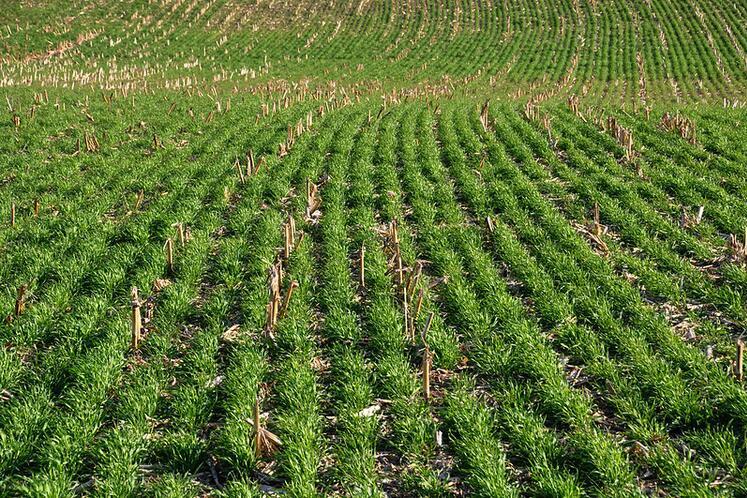
Cereal rye cover crop. Credit: Lynn Betts, NRCS/SWCS
Cover crops, with their ability to reduce erosion and promote soil health, are being planted across more Midwestern land than ever. That’s according to new University of Illinois research showing cover crop adoption reached 7.2% in 2021, up from just 1.8% a decade prior. The finding is the result of sophisticated satellite-based remote sensing efforts that accurately detected cover crops across 140 million acres of cropland and tracked their expansion over 20 years.
“It’s impossible to do field surveys for the whole Midwest. And so, remote sensing can provide a cost-effective approach for cover crop detection. We can monitor every field from the very beginning to the end of the year, giving us a clear idea of what happened over time,” says Qu Zhou, the study’s lead author and a doctoral student in the Department of Natural Resources and Environmental Sciences (NRES), part of the College of Agricultural, Consumer and Environmental Sciences at Illinois. Zhou is supervised by SMARTFARM lead Kaiyu Guan, NRES Associate Professor in NRES, Founding Director of the Agroecosystem Sustainability Center, and senior author on the study.
Read the full news release by ACES Media Communications Specialist Lauren Quinn >>>
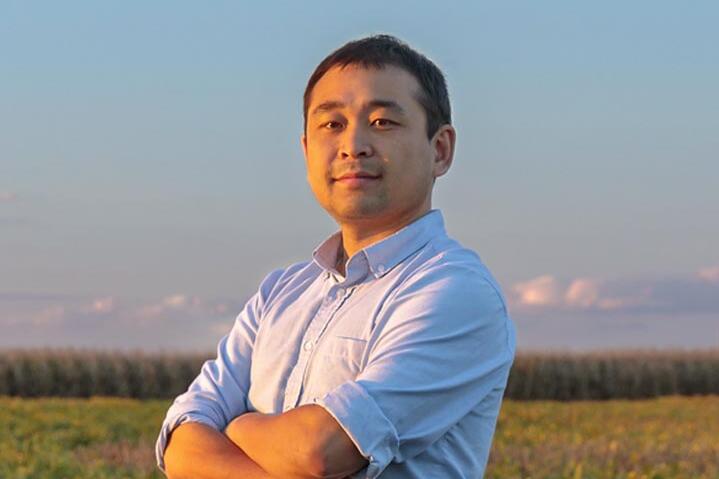
SMARTFARM Primary Investigator Kaiyu Guan, Associate Professor in the College of Agricultural, Consumer and Environmental Sciences (ACES) at the University of Illinois, was honored with a GroundBreaker Prize this week by FoodShot Global, the collaborative capital investment platform that catalyzes innovation for a healthier, more sustainable, and more equitable food system. Guan is part of the faculty in the Department of Natural Resources and Environmental Sciences (NRES) in ACES.
Guan, founding director of the Agroecosystem Sustainability Center and Blue Waters Professor with National Center for Supercomputing Applications at the University of Illinois, will receive $120,000 for his work in Innovating Soil 3.0. He is developing a “system of systems” approach that can support farmer decision-making to improve soil health and provide scientifically rigorous MRV (monitoring, reporting, and verification) services to ecosystem services markets.
Read the full news release by ACES Media Communications Specialist Lauren Quinn >>>
According to a recent news release by Stanford University:
The promise for American agriculture is tantalizing: healthier soil, more carbon kept in the ground, less fertilizer runoff, and less need for chemicals. The reality of planting cover crops during the off-season — a much-touted and subsidized approach to climate change mitigation — is more complicated, according to new Stanford University-led research that included SMARTFARM lead investigator Kaiyu Guan, Founding Director of the Agroecosystem Sustainability Center (ASC) and Blue Waters Associate Professor of Natural Resources & Environmental Sciences (NRES).
The study, published Nov. 8 in Global Change Biology, reveals that cover cropping as currently done in a major U.S. crop-growing region reduces corn and soybean yields, and could lead to indirect environmental impacts from expanded cultivation to make up for the losses.
“Use of cover crops is rapidly spreading. We wanted to see how these new practices affect crop yields in the real world, outside of small-scale research plots,” said Jillian Deines, lead author of the study and a postdoctoral scholar in Stanford’s Center on Food Security and the Environment (FSE) at the time of the research.
“Agriculture is a very tricky business to get right, and things typically don’t work out as planned” added senior author David Lobell, the Gloria and Richard Kushel Director of FSE and professor in Earth System Science. “Our view is that constant monitoring, evaluation, and learning is a key part of making agriculture truly sustainable.”
In addition to the Stanford team, co-authors from the University of Illinois Urbana-Champaign include SMARTFARM and ASC’s Sheng Wang, NRES Research Assistant Professor in Natural Resources & Environmental Sciences; and ASC/NRES Ph.D. student Qu Zhou.
 Nitrous oxide may be much less abundant in the atmosphere than carbon dioxide, but as a greenhouse gas, it’s a doozy. With a potency 300 times greater than CO2, nitrous oxide’s warming potential, especially via agriculture, demands attention.
Nitrous oxide may be much less abundant in the atmosphere than carbon dioxide, but as a greenhouse gas, it’s a doozy. With a potency 300 times greater than CO2, nitrous oxide’s warming potential, especially via agriculture, demands attention.
University of Illinois and University of Minnesota researchers are answering the call. In a new study published in Agricultural and Forest Meteorology, they document an overlooked but crucial timeframe for nitrous oxide (N2O) emissions in U.S. Midwest agricultural systems: the non-growing season.
The scientists, including members of the SMARTFARM team, used a computer simulation model known as ecosys to determine the hotspots and “hot moments” for N2O emissions across the Midwest. Specifically, they teased out the climate and environmental factors contributing to N2O emissions on a county-by-county basis during non-growing seasons between 2001 and 2020. They also looked at the effects of fertilizer application timing and nitrification inhibitors.
“This validation study demonstrates the ecosys model can realistically simulate N2O emissions from agricultural soils in the non-growing season. It means we now have a robust way to quantify the contributions of environmental variables and nitrogen application timing to this important greenhouse gas,” says study co-author Kaiyu Guan, Associate Professor of Natural Resources and Environmental Sciences, Founding Director of the Agroecosystem Sustainability Center at the U of I, and SMARTFARM lead.
Read the full news release by College of ACES Communications Specialist Lauren Quinn >>>
 In October 2022, the National Center for Supercomputing Applications featured SMARTFARM PI Kaiyu Guan, his science, his discoveries, and his aspirations to help make all farmland more sustainable. He uses NCSA’s supercomputing resources — from Blue Waters to Delta — to help tackle issues of environmental quality and food security.
In October 2022, the National Center for Supercomputing Applications featured SMARTFARM PI Kaiyu Guan, his science, his discoveries, and his aspirations to help make all farmland more sustainable. He uses NCSA’s supercomputing resources — from Blue Waters to Delta — to help tackle issues of environmental quality and food security.

The brief inclement weather on Feb. 5-8, 2022, caused some delays in sensing and measurements. The SMARTFARM autochambers overtopped with snow in some instances, and many of the collars that the autochambers fit over filled with snow. Additionally, the seals around the collars froze, which prevents the autochambers from collecting accurate data due to increased potential for gas leaks. For these reasons, the team paused all chamber measurements during the exceptionally snowy period.
According to the MCB-Lab and SYMFONI teams:
Over the past two years, researchers have collected a multitude of data to create a gold-standard platform. They are processing and analyzing this large range of data from soil sensors to eddy flux data for gas intake-outtake to airborne hyperspectral imaging.
This large collaboration between the farmers, our collaborating institutions and researchers at Illinois has helped provide a comprehensive data set needed to address agricultural decisions.
The team has published six papers in scholarly journals during the past year (please see Publications section below) and made three conference presentations.
SMARTFARM researchers were part of a multi-institutional team that has significantly improved the performance of numerical predictions for agricultural nitrous oxide emissions using novel modeling that combines artificial intelligence and process-based knowledge.

Researchers have developed a first-of-its-kind knowledge-guided machine learning model for agroecosystems called KGML-ag, which includes less obvious variables such as soil water content, oxygen level, and soil nitrate content related to nitrous oxide production and emission. Credit: iStock
According to a release from the University of Minnesota — home of the corresponding author and Digital Agriculture Group lead Zhenong Jin — the team developed a first-of-its-kind knowledge-guided machine learning model for agroecosystem, called KGML-ag, which is 1,000 times faster than current solutions and also significantly improves the modeling accuracy of greenhouse gas emissions from agriculture.
The research was recently published in Geoscientific Model Development. Researchers involved were from Minnesota, Illinois, Lawrence Berkeley National Laboratory, and the University of Pittsburgh. According to the Minnesota news release, KGML-ag was constructed by a special procedure that incorporates the knowledge learned from an advanced agroecosystem computational model, called ecosys, to design and train a machine learning model. In small, real-world observations, the KGML-ag turns out to be much more accurate than either ecosys or pure machine learning models.
“This is revolutionary work that brings together the best of observational data, process-based models, and machine learning by integrating them together,” said SMARTFARM Project Director Kaiyu Guan, a coauthor of the study, Founding Director of the Agroecosystem Sustainability Center (ASC) and Blue Waters Associate Professor of Natural Resources & Environmental Sciences (NRES) at Illinois.
Jin, Assistant Professor of Agroecosystem Modeling at Minnesota, and Vipin Kumar, Professor and Head of Computer Science and Engineering at Minnesota, are co-authors from the SMARTFARM project. ASC and SMARTFARM team member Bin Peng and ASC team member Wang Zhou, both from NRES at Illinois, also were among the article’s 16 authors.
 There is much more carbon stored in Earth’s soil than in its atmosphere. A significant portion of this soil carbon is in organic form (carbon bound to carbon), called soil organic carbon (SOC). Notably, unlike the inorganic carbon in soils, the amount of SOC, and how quickly it is built up or lost, can be influenced by humans. Since its advent about 10,000 years ago, agriculture has caused a significant amount of SOC to be released into the atmosphere as carbon dioxide, contributing to climate change.
There is much more carbon stored in Earth’s soil than in its atmosphere. A significant portion of this soil carbon is in organic form (carbon bound to carbon), called soil organic carbon (SOC). Notably, unlike the inorganic carbon in soils, the amount of SOC, and how quickly it is built up or lost, can be influenced by humans. Since its advent about 10,000 years ago, agriculture has caused a significant amount of SOC to be released into the atmosphere as carbon dioxide, contributing to climate change.
Quantifying the amount of SOC in agricultural fields is therefore essential for monitoring the carbon cycle and developing sustainable management practices that minimize carbon emissions and sequester carbon from the atmosphere to the soil to reduce or reverse the climate effects of agriculture.
The traditional and most reliable way to quantify SOC is by soil sampling, with analyses in the lab (“wet chemical” measurement). But which locations in the field should be sampled? And how many samples should be taken for an accurate estimate? Each additional soil core adds significant labor and expense — and uncertainties in how to optimize sampling can lead to substantial extra costs.
In a new publication in Geoderma from the U.S. Department of Energy’s (DOE) SMARTFARM Project, researchers evaluated strategies for estimating SOC. Their goal was to develop an estimation strategy that maximizes accuracy while minimizing the number of soil cores sampled.
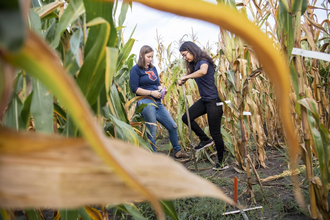
New machine learning algorithms could replace in-field soil sampling to accurately estimate soil organic carbon.
Just how much carbon is in the soil? That’s a tough question to answer at large spatial scales, but understanding soil organic carbon at regional, national, or global scales could help scientists predict overall soil health, crop productivity, and even worldwide carbon cycles.
Classically, researchers collect soil samples in the field and haul them back to the lab, where they analyze the material to determine its makeup. But that’s time- and labor-intensive, costly, and only provides insights on specific locations.
In a recent study partially funded by the U.S. Department of Energy for the SMARTFARM project, University of Illinois researchers show new machine-learning methods based on laboratory soil hyperspectral data could supply equally accurate estimates of soil organic carbon. Their study provides a foundation to use airborne and satellite hyperspectral sensing to monitor surface soil organic carbon across large areas.
The lead study author is SMARTFARM’s Sheng Wang, Research Assistant Professor in Natural Resources & Environmental Sciences (NRES) and the Agroecosystem Sustainability Center (ASC). Other authors from SMARTFARM include Principal Investigator Kaiyu Guan, ASC Founding Director and NRES Associate Professor, D.K. Lee, Professor of Crop Sciences, and Jian Peng, Assistant Professor of Computer Science.
Read the College of ACES article by Lauren Quinn here >>>
Read the full paper in Remote Sensing of the Environment >>>
 In a first-of-its-kind study, members of the SMARTFARM team and other University of Illinois researchers put hyperspectral sensors on planes to quickly and accurately detect nitrogen status and photosynthetic capacity in corn.
In a first-of-its-kind study, members of the SMARTFARM team and other University of Illinois researchers put hyperspectral sensors on planes to quickly and accurately detect nitrogen status and photosynthetic capacity in corn.
“Field nitrogen measurements are very time- and labor-consuming, but the airplane hyperspectral sensing technique allows us to scan the fields very fast, at a few seconds per acre. It also provides much higher spectral and spatial resolution than similar studies using satellite imagery,” says Sheng Wang, Research Assistant Professor in the Agroecosystem Sustainability Center (ASC) and the Department of Natural Resources and Environmental Sciences (NRES) at the U of I. Wang is lead author on the study; SMARTFARM Principal Investigator and ASC Director Kaiyu Guan and Research Scientist Chongya Jiang are among other co-authors.
The plane, fitted with a top-of-the-line sensor capable of detecting wavelengths in the visible and near infrared spectrum (400-2400 nanometers), flew over an experimental field in Illinois three times during the 2019 growing season. The researchers also took in-field leaf and canopy measurements as ground-truth data for comparison with sensor data.
The flights detected leaf and canopy nitrogen characteristics, including several related to photosynthetic capacity and grain yield, with up to 85% accuracy — “close to ground-truth quality,” Guan said.
Read the full article by the College of ACES’ Lauren Quinn >>>
Check out the new publication in the International Journal of Applied Earth Observation and Geoinformation >>>

Cornfield tissue sampling at the V6 (initiation of the uppermost ear and tassel) growth stage.
FROM MBC LAB WORK:
Guan reports that initial eddy covariance towers were set up in Bondville (October 2020) and two other sites (March 2021) — and that these three flux systems for CO2 and H2O based on Licor smartflux system have been functioning continuously and smoothly, with the exception of a minor hardware issue at one site and brief periods of seeding and fertilizer application in all the sites during May and June in 2021.
“We carry out routine inspection both in site and remotely, as well as system maintenance, including sensor/mirror cleaning, weed control, and other site management practices along the growing season,” he said.
Besides in-situ flux measurement based on the eddy covariance system, the team also carries out routine measurement on LAI and plant canopy heights in all sites.
Plant tissue sampling has been completed in all three locations at the V6 and VT (tassel) corn growth stages. Greenhouse gas sampling collection changed from weekly to biweekly since the emission decreased. Water and plant samples in process.
FROM SYMFONI WORK:
Among the many accomplishments during the past year, the team reports the following from the U of I sites:
- Team members are developing two separate approaches to provide soil moisture information at high spatial resolution: to downscale the coarse-resolution passive radiometer data with optical and thermal signals; and to retrieve soil moisture by synergetic use of sentinel-1 SAR and optical remote sensing data. The team collected in-situ surface soil moisture and roughness measurements across multiple fields near the ARPA-E sites and the data will be used to validate the high-resolution soil moisture estimations.
- To collect ground truth of leaf area index, researchers have built a ground camera network in the study area in Champaign County. The cameras automatically take downward viewing images from the top of canopy and upward viewing images from the bottom of canopy. These images are automatically analyzed to quantify leaf area index using computer vision technique and radiative transfer theory. This data will be used to calibrate remote sensing models for the estimation of leaf area index for individual fields across the study area.
- Team members have collected rich site-level historical observations at seven flux tower sites in the U.S. Midwest, which include biomass for different plant organs, leaf area index, net ecosystem exchange (NEE), and partitioned ecosystem respiration (Reco) and gross primary productivity (GPP) etc. We have used this data to calibrate the Ecosys model at the site scale.
- Researchers generated synthetic data for corn-soybean rotations from 2001- to ’18 for 99 randomly selected sites by the Ecosys model. Hourly meteorological inputs (net radiation, air temperature, precipitation, relative humidity, and wind speed) were retrieved, and layerwise soil properties were derived to conduct the Ecosys simulations. Twenty different N fertilizer rates ranging from 0 to 300 lb N/acre were applied in May for each simulation to include the impacts of the N fertilizer application. Variables including daily N2O fluxes, N fertilizer rate, over 100 intermediate variables, weather forcings (converted to daily), and static soil properties were collected, and then processed into the matrix to input to the DL models
 NEW PUBLICATION!
NEW PUBLICATION!
Computational models that track carbon as it cycles through an agroecosystem have massive untapped potential to advance the field of precision agriculture, increasing crop yields and informing sustainable farming practices.
“Although modeling the carbon cycle in agroecosystems has been done before, our work represents the most comprehensive integration of models and observations, as well as rigorous validation that includes rich measurements from both field and regional scales. The modeling performance of our solution (published this month in Agriculture and Forest Meteorology) far surpasses prior studies,” said SMARTFARM Lead Kaiyu Guan, an Associate Professor of Natural Resources & Environmental Sciences at the University of Illinois Urbana-Champaign. Guan is also a Blue Waters Professor at the National Center for Supercomputing Applications (NCSA) and Founding Director of the Agroecosystem Sustainability Center created by the College of Agricultural, Consumer, and Environmental Sciences and iSEE.
A postdoctoral research position is available in the Institute for Sustainability, Energy, and Environment at the University of Illinois Urbana-Champaign as part of the SMARTFARM project funded by the U.S. Department of Energy. A major goal of SYMFONI (System of Systems Solutions for Commercial Field-Level Quantification of Soil Organic Carbon and Nitrous Oxide Emission for Scalable Applications) is to understand the field scale mechanisms driving carbon storage and loss and gaseous nitrogen fluxes from commercial agricultural fields under different management practices.
The postdoc will focus on making high-resolution measurements of soil carbon dioxide and nitrous oxide fluxes with automated gas exchange equipment, as well as soil driving variables (e.g. pH, soil bulk density, soil organic matter and carbon, nutrients, etc). Experience with instrumentation and management of large data sets are desirable for this position. A willingness to learn techniques for spatial analyses also would be beneficial. The successful candidate will have experience conducting field research and should be comfortable working in a highly collaborative environment where they will coordinate research activities with a large team, supervise technicians and undergraduates, and write manuscripts. Field work will be conducted on commercial farms in Champaign County, Illinois.
The postdoc will work primarily under the guidance of Co-PIs Evan DeLucia, Wendy Yang, and Carl Bernacchi, and will be expected to collaborate with other ecosystem ecologists, ecosystem modelers, ecohydrologists, and others in the SYMFONI project.
Required Qualifications:
- A Ph.D. or the equivalent in ecology, biogeochemistry, soil science, or related field
- Experience with laboratory and field work
- Strong English writing and oral communication skills
- Strong organizational skills
- Ability to work in a collaborative environment
- Ability to travel frequently to local research sites
- A valid driver’s license
All candidates must have received a Ph.D. in a relevant field within the past five years. The position is available for two years, with possible extension further; however, annual renewal is dependent on funding and progress made by the individual. This position includes a competitive salary and full benefits.
Application review will begin June 15, 2021, and will continue until the position is filled. The start date is flexible, but ideally the start would be on or before Dec. 1, 2021. Applications should include a brief cover letter, curriculum vitae, and the names and contact information for three references. Please send your application via email to Anya Knecht, the SYMFONI Research Coordinator, at knecht2@illinois.edu.
For further information about the position, please contact DeLucia at delucia@illinois.edu, Yang at yangw@illinois.edu, or Bernacchi at bernacch@illinois.edu.
Illinois is an Affirmative Action /Equal Opportunity Employer and welcomes individuals with diverse backgrounds, experiences, and ideas who embrace and value diversity and inclusivity (www.inclusiveillinois.illinois.edu).
The University of Illinois conducts criminal background checks on all job candidates upon acceptance of a contingent offer.
 On Sept. 8, 2020, the University of Illinois announced that the Smart Farms team led by Kaiyu Guan was awarded $4.5 million from the U.S. Department of Energy’s Advanced Research Projects Agency-Energy (ARPA-E) through its “Systems for Monitoring and Analytics for Renewable Transportation Fuels from Agricultural Resources and Management” (SMARTFARM) program.
On Sept. 8, 2020, the University of Illinois announced that the Smart Farms team led by Kaiyu Guan was awarded $4.5 million from the U.S. Department of Energy’s Advanced Research Projects Agency-Energy (ARPA-E) through its “Systems for Monitoring and Analytics for Renewable Transportation Fuels from Agricultural Resources and Management” (SMARTFARM) program.
The funding will be used to calculate farm-scale carbon credits, allowing individual farmers to understand the value of their land and practices toward carbon trading markets. Funding for the newest phase of the project, named “SYMFONI,” allows accurate and rapid field-level quantification of carbon intensity for every individual field across the U.S. and can be seamlessly scaled up to the global scale. This is made possible through the integration of field-based observations with satellite and aerial hyperspectral data, physics-guided deep learning, mobile soil sensing, and supercomputing. Guan, Assistant Professor of Natural Resources and Environmental Sciences (NRES) and a Blue Waters Professor at the National Center for Supercomputing Applications (NCSA), says the system builds a generic framework that will flexibly integrate newer sensor technologies as they become available, meaning the output will continue to improve over time.
“We couldn’t be prouder of Kaiyu and his team’s efforts toward a more sustainable future for agriculture and the planet. Innovations from researchers within the College of Agricultural, Consumer and Environmental Sciences (ACES), along with our partners across campus, have been changing the world for 150 years, and with investments like this from ARPA-E, we’ll continue moving forward to a brighter future,” said German Bollero, Associate Dean for research in the College of ACES.
The Illinois team was the only group nationwide to be twice awarded funds in ARPA-E’s SMARTFARM program in its two funding phases. The same team leads a Phase 1 project ($3.3 million) to collect gold-standard carbon emission data at the farm scale and build the foundation for testing Phase 2 technologies. The Illinois-led project also represents the largest portion of SMARTFARM funding, receiving 27% of the total distributed in the current round of funding.
The project team includes nine members across Illinois’ Urbana-Champaign campus. For this round of funding, Jian Peng from Grainger College of Engineering was added — as were Zhenong Jin and Vipin Kumar from the University of Minnesota, Kang Sun from the University of Buffalo, and Jinyun Tang from Lawrence Berkeley National Lab.
 The Institute for Sustainability, Energy, and Environment (iSEE) was instrumental in helping a University of Illinois team land a $3.3 million U.S. Department of Energy grant.
The Institute for Sustainability, Energy, and Environment (iSEE) was instrumental in helping a University of Illinois team land a $3.3 million U.S. Department of Energy grant.
The U.S. Department of Energy has awarded a $3.3 million grant to a multidisciplinary research team at the University of Illinois at Urbana-Champaign to develop a precise system for measuring greenhouse gas emissions from commercial bioenergy crops grown in central Illinois.
The three-year project through the Institute for Sustainability, Energy, and Environment (iSEE) is expected to reduce emissions associated with ethanol and other biofuels by enabling new technology for managing bioenergy crops, improving yield, reducing overfertilization, and designing new tools for “smart farms.” The vast data collected will be publicly available and could someday lead to financial rewards for farmers who reduce emissions through sustainable crop management.
Led by Kaiyu Guan, an Assistant Professor of Natural Resources and Environmental Sciences (NRES), the team will establish the Midwest Bioenergy Crop Landscape Laboratory (MBC-Lab) to monitor emissions on three 85-acre maize and soybean fields in Champaign County.
Agroecosystem Sustainability Center in the News
May 2023: “Illinois Dust Storm Underscores the Urgency for a New Approach to Farming,” an opinion piece by ASC Director Kaiyu Guan and Syngenta Chief Soil Scientist Matthew Wallenstein in AgriPulse.
December 2022: A Video Overview of ASC for the American Geophysical Union Conference
The Team
 Principal Investigator (PI) and co-PIs
Principal Investigator (PI) and co-PIs
- MBC Lab and SYMFONI: Kaiyu Guan (PI), Levenick Professor of Sustainability, Natural Resources and Environmental Sciences, University of Illinois Urbana-Champaign (right)
Departmental page >>>
Lab page >>> - MBC Lab and SYMFONI: Carl Bernacchi, Plant Physiologist, U.S. Department of Agriculture Agricultural Research Service
USDA ARS page >>>
Lab page >>> - MBC Lab and SYMFONI: Evan H. DeLucia, Arends Professor Emeritus of Plant Biology, University of Illinois Urbana-Champaign
Departmental page >>>
Lab page >>> - MBC Lab: Jeremy Guest, Associate Professor of Civil & Environmental Engineering, University of Illinois Urbana-Champaign
Departmental page >>>
Lab page >>> - SYMFONI: Zhenong Jin, Assistant Professor of Agroecosystem Modeling, University of Minnesota
Departmental page >>>
Lab page >>> - MBC Lab and SYMFONI: D.K. Lee, Professor of Crop Sciences, University of Illinois Urbana-Champaign
Departmental page >>>
Lab page >>> - MBC Lab: Jong Lee, Principal Research Scientist at National Center for Supercomputing Applications, University of Illinois Urbana-Champaign
NCSA page >>> - SYMFONI: Jian Peng, Assistant Professor of Computer Science, University of Illinois Urbana-Champaign
Departmental page >>> - MBC Lab and SYMFONI: Wendy Yang, Professor of Plant Biology, University of Illinois Urbana-Champaign
Departmental page >>>
Lab page >>>
Operating Team (Faculty, Postdocs, Technicians, Students)
- MBC Lab: Chunhwa Jang, Postdoc in Crop Sciences, University of Illinois Urbana-Champaign
- SYMFONI: Vipin Kumar, William Norris Professor and Head of Computer Science and Engineering, University of Minnesota
Departmental page >>> - SYMFONI: Kang Sun, Assistant Professor of Civil, Structural and Environmental Engineering, University at Buffalo
Departmental page >>>
Lab page >>> - MBC Lab: Gevan Behnke, Postdoc in Crop Sciences, University of Illinois Urbana-Champaign
- MBC Lab: Nakian Kim, Postdoc in Crop Sciences, University of Illinois Urbana-Champaign
- MBC Lab: Yuchen Liu, Postdoc in Natural Resources & Environmental Sciences, University of Illinois Urbana-Champaign
- MBC Lab: Xiangmin “Sam” Sun, Postdoc in Plant Biology, University of Illinois Urbana-Champaign
Bernacchi Lab page >>>
Read a profile on Sam and his SMARTFARM work >>> - SYMFONI: Jinyung Tang, Research Scientist, Lawrence Berkeley National Laboratory
Departmental page >>> - MBC Lab and SYMFONI: Sheng Wang, Research Assistant Professor in Natural Resources & Environmental Sciences, University of Illinois Urbana-Champaign
Read a Carl R. Woese Institute for Genomic Biology profile on Sheng >>> - MBC Lab and SYMFONI: Bin Peng, Research Scientist in Natural Resources & Environmental Sciences, University of Illinois Urbana-Champaign
- MBC Lab: Taylor Pederson, Field Technician, Plant Biology, University of Illinois Urbana-Champaign
- MBC Lab: Vismayak Mohanarajan, Programmer, NCSA, University of Illinois Urbana-Champaign
- SYMFONI: Jacob Forbes, Research Technician, iSEE
- SYMFONI: Melvin Kuchefski, Research Technician, iSEE
- SYMFONI: Logan Tipsword, Research Technician, iSEE
- MBC Lab: Leslie Stoecker, Data Manager, Center for Advanced Bioenergy and Bioproducts Innovation, University of Illinois Urbana-Champaign
- SYMFONI: Chantelle Lonsdale, Ph.D. Candidate, Structural and Environmental Engineering, University at Buffalo
- Xiang Zhu, Research Coordinator, iSEE, University of Illinois Urbana-Champaign
- Yiwei An, Research Administration Specialist, iSEE, University of Illinois Urbana-Champaign
Collaborator
- MBC Lab: Tilden Meyers, National Oceanic and Atmospheric Administration Atmospheric Turbulence and Diffusion Division, Oak Ridge, Tenn.
Former Team Members
- MBC Lab and SYMFONI: Chongya Jiang, Research Scientist, iSEE, University of Illinois Urbana-Champaign
- Ching-Hsien Lin, Postdoc, Crop Sciences, University of Illinois Urbana-Champaign
- Katie Bowman, Field Technician, Plant Biology, University of Illinois Urbana-Champaign
- Aaraj Habib, Programmer, NCSA, University of Illinois Urbana-Champaign
- Diego Rivera, Programmer, NCSA, University of Illinois Urbana-Champaign
- Anya Knecht, Program Manager, iSEE, University of Illinois Urbana-Champaign
- Laura Martin, Program Manager, Agroecosystem Sustainability Center, University of Illinois Urbana-Champaign
Publications
(SMARTFARM members’ names in bold):
- “Agricultural Nitrate Export Patterns Shaped by Crop Rotation and Tile Drainage,” Ma, Z., Guan, K., Peng, B., Sivapalan, M., Li, L., Pan, M., Zhou, W., Warner, R., Zhang, J. Water Research (Feb. 1, 2023); College of ACES news release >>>
- “Cross-Scale Sensing of Field-Level Crop Residue Cover: Integrating Field Photos, Airborne Hyperspectral Imaging, and Satellite Data,” Wang, S., Guan, K., Zhang, C., Zhou, Q., Wang, S., Wu, X, Jiang, C., Peng, B., Mei, W., Li, K., Li, Z, Yang, Y., Zhou, W., Huang, Y., Ma, Z. Remote Sensing of Environment (Feb. 1, 2023); ACS news release >>>
- “How Does Uncertainty of Soil Organic Carbon Stock Affect the Calculation of Carbon Budgets and Soil Carbon Credits for Croplands in the U.S. Midwest?” Zhou, W., Guan, K., Margenot, A., Lee, D.K., Tange, J., Jin, Z., Grant, R., DeLucia, E.H., Qin, Z., Wander, M., Wang, S. Geoderma (Nov. 24, 2022); iSEE news release >>>
- “Recent Cover Crop Adoption is Associated with Small Maize and Soybean Yield Losses in the United States,” Deines, J.M., Guan, K., Lopez, B., Zhou, Q., White, C.S., Wang, S., Lobell, D.B. Global Change Biology (Nov. 8, 2022); read the Stanford University news release >>>
- “Recent Rapid Increase of Cover Crop Adoption Across the U.S. Midwest Detected by Fusing Multi-Source Satellite Data,” Zhou, Q., Guan, K., Wang, Sh., Jiang, C., Huang, Y., Peng, B., Chen, Z., Wang, Si., Hipple, J., Schaefer, D., Qin, Z., Stroebel, S., Coppess, J., Khanna, M., Cai, Y. Geophysical Research Letters (Nov. 7, 2022); read the College of ACES news release >>>
- “Distinct Driving Mechanisms of Non-Growing Season N2O Emissions Call for Spatial-Specific Mitigation Strategies in the U.S. Midwest,” Yang, Y., Liu, L., Zhou, W., Guan, K., Tang, J., Kim, T., Grant, R.F., Peng, B., Zhu, P., Li, Z., Griffis, T.J., Jin, Z. Agricultural and Forest Meteorology (Sept. 15, 2022); read the College of ACES news release >>>
- “KGML-ag: A Modeling Framework of Knowledge-Guided Machine Learning to Simulate Agroecosystems: A Case Study of Estimating N20 Emission Using Data from Mesocosm Experiments,” Liu, L., Xu, S., Tang, J., Guan, K., Griffis, T.J., Erickson, M.D., Frie, A.L., Jia, X., Kim, T., Miller, L.T., Peng, B., Wu, S., Yang, Y., Zhou, W., Kumar, V., Jin, Z. Geoscientific Model Development (April 2022); read the University of Minnesota news release >>>
- “How to Estimate Soil Organic Carbon Stocks of Agricultural Fields? Perspectives Using Ex-Ante Evaluation,” Potash, E., Guan, K., Margenot, A., Lee, D.K., DeLucia, E.H., Wang, S., Jang, C. Geoderma (April 2022); read the iSEE news release >>>
- “Using Soil Library Hyperspectral Reflectance and Machine Learning to Predict Soil Organic Carbon: Assessing Potential of Airborne and Spaceborne Optical Soil Sensing,” Wang, S., Guan, K., Zhang, C., Lee, D.K., Margenot, A.J., Ge, Y., Peng, J., Zhou, W., Zhou, Q., Huang, Y. Remote Sensing of Environment (March 2022); read the ACES news release >>>
- “Airborne Hyperspectral Imaging of Nitrogen Deficiency on Crop Traits and Yield of Maize by Machine Learning and Radiative Transfer Modeling.” Wang, S., Guan, K., Wang, Z., Ainsworth, E.A., Zheng, T., Townsend, P.A., Liu, N., Nafziger, E., Masters, M.D., Li, K., Wu, G., Jiang, C. International Journal of Applied Earth Observation and Geoinformation (December 2021); read the ACES news release >>>
- “Quantifying Carbon Budget, Crop Yields, and their Responses to Environmental Variability Using the Ecosys Model for U.S. Midwestern Agroecosystems.” Zhou, W., Guan, K., Peng, B., Tang, J., Jin, Z., Jiang, C., Grant, R. Mezbahuddin, S. Agricultural and Forest Meteorology (July 2021); read the iSEE news release >>>
- “Quantifying Nitrogen Loss Hotspots and Mitigation Potential for Individual Fields in the U.S. Corn Belt with a Metamodeling Approach.” Kim, T., Jin, Z., Smith, T., Liu, L., Yang, Y., Yang, Y., Peng, B., Phillips, K., Guan, K., Hunter, L.C. Environmental Research Letters (July 2021)
